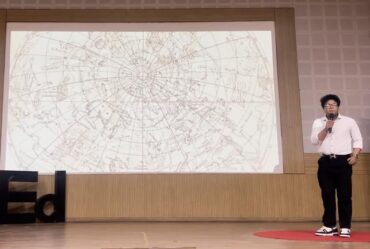
Diné MIT Graduate Cory Romanov SB ’24 Connects with Congressman David Schweikert During Navajo Nation Visit
WASHINGTON, D.C. – On a recent visit to the Navajo Nation December 28th, Arizona Representative David Schweikert (R-AZ-1) had an unexpected and inspiring encounter with Diné student Cory Romanov SB ’22, a recent graduate from the Massachusetts Institute of Technology’s (MIT) Department of Physics. The congressman was in Arizona on a trip organized by the Navajo Nation Washington Office to address the region’s pressing water infrastructure challenges. During a scheduled stop in Ganado, Arizona, Schweikert visited several sites, including the Hornet Pavilion, Hubbell Trading Post, the new Sage Memorial Hospital, and Ganado Chapter House.
At the chapter house, Schweikert initially encountered Romanov’s family, who had reserved the space to host a large graduation reception in honor of Cory’s recent accomplishment— earning his bachelor’s degree in physics from MIT. Politely informing the congressman that the chapter house was closed for a special celebration, Cory’s family proudly shared his academic journey. Unaware at first that they were speaking to a congressman, the family warmly invited him to join the reception later in the day after he introduced himself. Schweikert was immediately impressed, especially after learning Cory graduated from the same MIT program the congressman once attended for six weeks while pursuing studies in statistics before earning his degree elsewhere.
Cory then had the opportunity to detail his ongoing pursuits with MIT as a technical instructor in the physics department. There, he assists with the advanced undergraduate teaching laboratory’s operation and instructs a first-year physics sequence, which is required of all MIT undergraduate students. When Schweikert was preparing to continue his tour, Cory arrived in his maroon blazer, helping carry food for the reception. His family warmly invited the congressman to join the celebration, but Schweikert had to continue his scheduled visits focused on water infrastructure. However, the brief meeting sparked a meaningful conversation between Schweikert and Cory, beginning with shared camaraderie as Schweikert openly praised Cory for his achievement. He acknowledged the rigor of MIT and commended Cory for his resilience in succeeding so far from home. Cory admitted there were moments he considered quitting but reflected on the lessons he learned from his family and their home on the Navajo Nation, which gave him the strength to persevere.
Originally spending his childhood in Ganado, Cory moved to Phoenix, Arizona where he attended Moon Valley High School. From an early age, he realized he thrived in Science Technology Engineering and Mathematics (STEM) and eagerly sought opportunities outside of his high school curriculum. For example, he attended the both Arizona State University’s Joaquin Bustoz Math-Science Honors program where he took his first calculus class and the MIT Introduction to Engineering and Science (MITES) programs during separate summers. These programs inspired him to go above and beyond to take night classes at a local community college where he expanded his skills in multivariable calculus and differential equations.
After the initial introduction, the conversation naturally shifted to shared educational experiences and advanced physics topics, including carbon sequestration technology and its potential applications to Navajo Nation energy. Impressed by Cory’s knowledge and potential, Congressman Schweikert even lightly offered him a position within his administration. Though Cory politely declined, explaining his passion for teaching and his commitment to completing his Ph.D., Schweikert enthusiastically handed him a business card and encouraged him to reach out if he ever needed support.
Schweikert, recognizing that Cory had attended high school in his own district, commended him on his exceptional achievements. Before parting ways, the two took a photo together for the Navajo Nation Washington Office and Cory’s family, marking a memorable connection between a rising Diné physicist and a U.S. congressman.
Cory remains dedicated to his goal of pursuing a Ph.D. in physics and hopes to inspire other Navajo students to explore opportunities in STEM fields. As the only Native American staff member in MIT’s School of Science, he uses this unique position to advocate for more representation and outreach. Additionally, he shared that he remains dedicated to mentoring younger students in STEM programs such as MITES and Northeastern University’s Bridge to Calculus.
Cory encourages college-bound students across the Navajo Nation to tackle their foundational math and science courses with enthusiasm, emphasizing that a strong foundation in algebra and geometry can pave the way for academic success at the university level.
“I attribute much of my success in college to these rigorous summer programs and suggest Navajo students looking to apply to elite universities to seek similar enrichment opportunities in STEM fields,” said Cory, “I want aspiring Native students to know they can thrive anywhere—even at the world’s most elite academic institutions.”
On behalf of Navajo Nation Washington Office Director Justin Ahasteen, we congratulate Cory Romanov on his remarkable accomplishments and extend our best wishes for his continued success in all his future endeavors.
For more information about the Navajo Nation Washington Office, please visit www.nnwo.org


